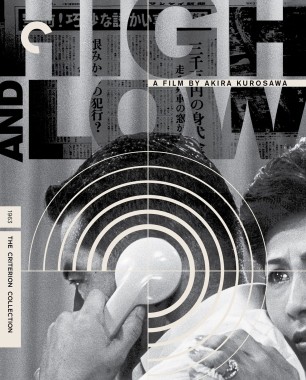From the Kurosawa Archives

With a monumental body of work spanning nearly six decades, thirty feature films, and a staggering array of styles and genres, Akira Kurosawa has been a cornerstone of our collection since we released Seven Samurai as our second Criterion edition in 1998. On the 107th anniversary of his birth, we’re saluting him with a selection of our essays and videos, highlighting such key achievements as the groundbreaking narrative structure of Rashomon, the ingenious interpretations of Shakespeare in Throne of Blood and Ran, and the eye-popping surrealism of Akira Kurosawa’s Dreams. And for your viewing pleasure, we’ve got the Criterion Channel stocked with these and twenty-one other Kurosawa gems, as well as Chris Marker’s illuminating 1985 documentary portrait of the master, A.K.
- In this personal remembrance, preeminent Japanese-film scholar Donald Richie notes Kurosawa’s intensity of focus and aversion to theory: “He was interested only in practice—how to make films more convincing, more real, more right.”
- Stephen Prince surveys the impressive films that kickstarted the director’s career. Despite having to “contend with zealous government censors and the country’s physical and cultural collapse” during World War II, Kurosawa quickly established himself as a major talent in these four early works.
- From Marxism and Russian literature to impressionist painting and martial arts, Kurosawa’s early influences reveal his wide-ranging intellectual curiosity. Read Peggy Chiao on the cultural and political ideals that form the “philosophical backbone” of his filmography.
- In an interview featured on our Rashomon release, lighting and electrical technician Genkon Nakaoka recalls the painstaking four-hour shoot that went into creating one of the film’s most memorable moments:
- Kurosawa took on a Maxim Gorky classic in The Lower Depths, a relentlessly somber work that, as Keiko McDonald and Thomas Rimer explain in their liner notes, allowed the director to combine his “deep interest in theater” with his “mastery of multiple-camera techniques.”
- Set decorator and prop master Koichi Hamamura discusses how he and Kurosawa pulled off the shower of arrows at the end of the Macbeth-inspired Throne of Blood.
- Long before the blockbuster success of Star Wars, director George Lucas found creative inspiration in Kurosawa’s visual style. In this interview from our edition of The Hidden Fortress, a notable influence on that most iconic of space operas, Lucas reminisces on discovering his idol in film school:
- “Flush with needle-spiking tensions and bullet-train exhilarations,” High and Low is equal parts domestic drama, police procedural, and scathing social commentary. In his liner notes, Chuck Stephens reads the film as a possible rejoinder to the “the go-go nihilism of the then-rising Japanese nouvelle vague.”
- Michael Wilmington hails Kurosawa’s 1985 King Lear adaptation, Ran, as “the late masterpiece and testament of a great director contemplating his own twilight—and the world’s as well. It’s a tragedy fed by Shakespeare, Noh, and the samurai epic, full of metaphors and grand themes, a film that shows human brutality, warfare, and suffering as if from the eye of a dispassionate God, seated far above the world’s terror.”
- On our recently released edition of Akira Kurosawa’s Dreams, the director’s longtime collaborator, production manager Teruyo Nogami, details the preparation that went into the film’s technically ambitious set pieces.











